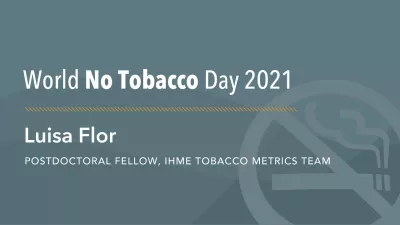
Luisa Flor, Senior Fellow, IHME Tobacco Metrics Team
Transcript has been lightly edited for clarity
Exposure to secondhand smoke, also known as passive smoking, increases the risk of lung cancer, stroke, ischemic heart disease, and various respiratory conditions. According to our own Global Burden of Disease study, exposure to tobacco smoke was linked to 1.3 million deaths globally in 2019. About 35% of the world’s population is exposed to tobacco smoke at home or at work. Women and children face the greatest burden, and in countries like China and Indonesia where the smoking rates among men are still very high, over 60% of them are at increased health risk due to passive smoking.
Banning smoking in public spaces with smoke-free policies, encouraging the adoption of smoke-free homes, and increasing smoking cessation support are clear ways to protect non-smokers from tobacco smoke. However, less than 25% of the world’s population is covered by policies banning smoking from all indoor public places and the majority of smokers are still smoking inside their homes in the presence of non-smoking household members. That means countries must continue making progress on implementing and enforcing strong tobacco control measures which are effective in decreasing smoking and protecting non-smokers from secondhand smoke and its harmful lifelong consequences.